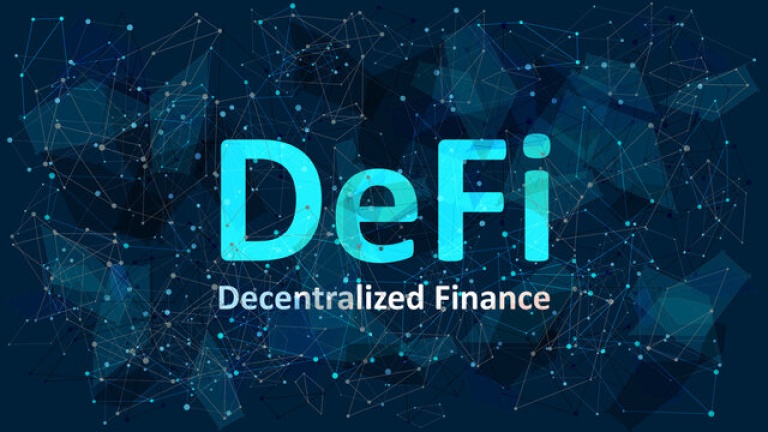Decentralized Finance has ushered in a new era of financial innovation, challenging the traditional structures of the financial industry. At the core of this movement are decentralized exchange platforms, facilitating peer-to-peer transactions, lending, and borrowing. Designing a successful DeFi exchange involves navigating a complex web of technologies, security considerations, and user experience dynamics. In this blog, we will delve into the key components and considerations for designing your DeFi exchange, exploring the intricate dynamics that contribute to the success of these decentralized financial platforms.
The Essence of Decentralized Finance
DeFi represents a paradigm shift from centralized to decentralized financial systems. It leverages blockchain technology and smart contracts to enable financial transactions without the need for traditional intermediaries. The ethos of decentralization, transparency, and inclusivity drives the DeFi movement, aiming to provide financial services to anyone with an internet connection, irrespective of their geographical location or socio-economic status.
Key Components of DeFi Exchange Design
Smart Contracts:
Smart contracts form the foundation of any DeFi exchange. These self-executing contracts, written in code, automate various financial functions, including trade execution, fund transfers, and yield distribution. The design and functionality of these smart contracts are critical to the security and efficiency of the platform.
Blockchain Selection:
The choice of blockchain is a pivotal decision in designing a DeFi exchange. Ethereum is a popular choice due to its robust smart contract capabilities, but other blockchains like Binance Smart Chain, Solana, and Polkadot offer unique advantages. Consider factors such as security, scalability, and transaction costs when selecting a blockchain.
User Interface (UI) and User Experience (UX):
Designing an intuitive and user-friendly interface is essential for user adoption. Users should be able to navigate the platform seamlessly, execute trades, and manage their assets effortlessly. A well-designed UI/UX enhances the accessibility of your DeFi exchange, attracting a broader user base.
Liquidity Pools:
Liquidity is a vital aspect of any exchange. Designing effective liquidity pools allows users to contribute their assets and earn rewards. Implementing mechanisms like yield farming incentivizes users to provide liquidity, creating a dynamic ecosystem that benefits both traders and liquidity providers.
Security Measures:
Security is paramount in the DeFi space. Implement robust security measures to safeguard user funds and sensitive information. Regular security audits, secure coding practices, and the use of decentralized storage solutions contribute to building trust in your platform.
Regulatory Compliance:
While the decentralized nature of DeFi aims to operate without intermediaries, navigating regulatory considerations is crucial for sustainability. Stay informed about regulatory requirements in the regions where your platform operates and collaborate with legal experts to ensure compliance.
Designing Your DeFi Exchange: Step-by-Step Guide
Define Your Objectives:
Clearly articulate the goals and objectives of your DeFi exchange. Understand your target audience, the types of assets you aim to support, and the unique value proposition your platform offers. This foundational step guides the entire design process.
Choose the Right Blockchain:
Evaluate and select the blockchain that aligns with your project goals. Consider factors like security, scalability, and transaction costs. Whether it's Ethereum, Binance Smart Chain, or another blockchain, the choice will impact the overall dynamics of your DeFi exchange.
Smart Contract Development:
Develop and deploy robust smart contracts that power the functionalities of your DeFi exchange. These may include contracts for trading, liquidity pools, and yield farming. Ensure that your smart contracts are well-audited and secure to prevent vulnerabilities.
User Interface Design:
Design an intuitive UI/UX that caters to a diverse user base. Prioritize accessibility, responsiveness, and ease of use. Seamless integration with popular wallets and straightforward onboarding processes contribute to a positive user experience.
Implement Liquidity Pools:
Integrate liquidity pools into your DeFi exchange. Design mechanisms to incentivize users to contribute liquidity, such as yield farming rewards. Well-designed liquidity pools enhance the trading experience and contribute to the overall liquidity of your platform.
Security Audits:
Conduct thorough security audits of your smart contracts and the entire platform. Engage with reputable auditing firms to identify and rectify potential vulnerabilities. Security breaches can erode trust, making security a top priority in the design phase.
Regulatory Considerations:
Navigate regulatory considerations carefully. While DeFi aims for decentralization, understanding and adhering to relevant regulations is crucial for long-term success. Collaborate with legal experts to ensure compliance without compromising the decentralized nature of your platform.
Community Engagement:
Foster a strong community around your DeFi exchange. Actively engage with users through social media, forums, and community events. Create channels for feedback, as the community's input can be invaluable for refining and optimizing your platform.
Iterative Development:
Embrace an iterative development approach. Launching a DeFi exchange is just the beginning; continuous improvement based on user feedback, technological advancements, and market trends is essential for long-term success.
Conclusion
Designing a successful DeFi exchange involves a careful blend of technological innovation, security measures, and a commitment to user experience. By understanding the intricate dynamics of decentralized finance and implementing a thoughtful design strategy, your platform can contribute to the democratization of financial services. As you embark on this journey, keep in mind that the success of your DeFi exchange is not just about transactions; it's about empowering individuals and communities to participate in a more inclusive and accessible financial future.


No comments yet